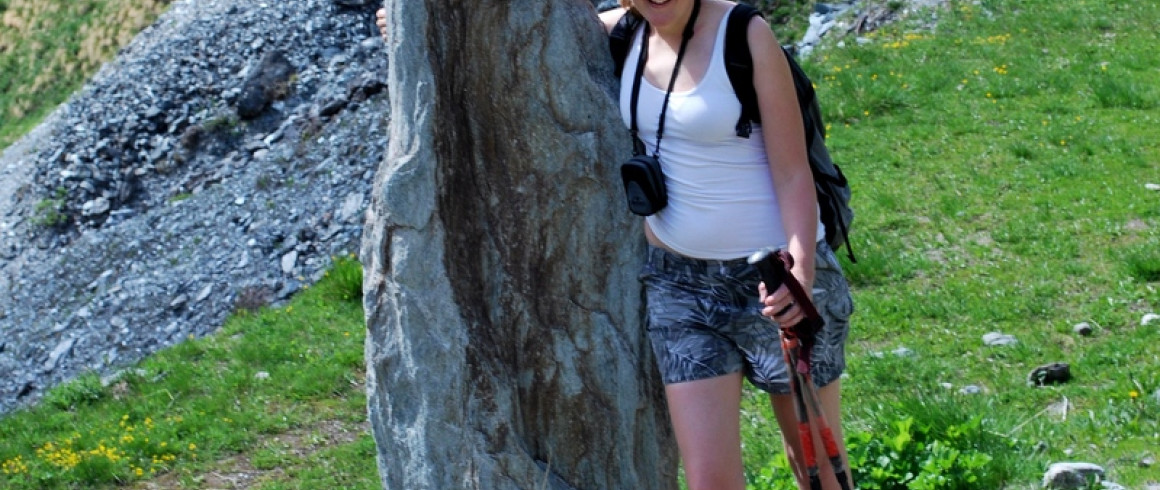Caution: deep water
[caption id="attachment_16963" align="alignright" width="300"] Credit: Simon Redfern[/caption]
Credit: Simon Redfern[/caption]
Recently the news has been full of images of Bárðarbunga, the volcano in Iceland that has wowed the world with spectacular eruptions accompanied by thousands of earthquakes.
A team of researchers from Cambridge’s Department of Earth Sciences went to Iceland to gather data using around 70 broadband seismometers. Their colleague Dr Sanne Cottaar, however, stayed behind in Cambridge. ‘If the seismometer was broken I would not be any help,’ she jokes. ‘I am a seismologist and I wouldn’t make a very good electronic engineer.’
‘Besides,’ she adds, ‘I work on very deep Earth processes taking place on the core-mantle boundary. These recent eruptions are just surface stuff to me.’ She laughs: ‘You could say it’s all a bit shallow.’
Sanne is the current Draper Research Fellow at Pembroke. Her work involves collating data on earthquakes taking place all over the world, from Iceland to Hawaii. Scientists working in far-flung locations might be capturing information about tremors for all kinds of different purposes. Whatever their own experiments, Sanne can still input their carefully-recorded numbers into her software and use it to help her understand the dynamics and the composition of the deep Earth.
She says: ‘The way I use earthquake waves is comparable to medical tomography. This is where you send waves through the body in order to make an image of the inside. In creating tomographic images of the Earth we are trying to answer all sorts of questions. What are the composition and dynamics of the deep Earth? Why does Earth have plate tectonics when other planets don’t? What happens to minerals when they are highly pressurised?’
 Currently, one of her major projects is to determine how much water is stored within the Earth, and where. She says: ‘This year, for the first time, scientists found a rock sample from deep in the Earth that contains a significant amount of water. If it is the case that a similar amount of water is present throughout the mantle, then the Earth contains an awful lot more water than we thought: perhaps around five times the amount in our oceans. We can already see that when one tectonic plate is pushed under another, it drives water down. But we have a theory that “what goes in should come out”, so how does this water get recycled in the deep Earth? And what is the role of water in plate tectonics on our planet? At the moment, we are collecting the various clues that the Earth gives us.’
Currently, one of her major projects is to determine how much water is stored within the Earth, and where. She says: ‘This year, for the first time, scientists found a rock sample from deep in the Earth that contains a significant amount of water. If it is the case that a similar amount of water is present throughout the mantle, then the Earth contains an awful lot more water than we thought: perhaps around five times the amount in our oceans. We can already see that when one tectonic plate is pushed under another, it drives water down. But we have a theory that “what goes in should come out”, so how does this water get recycled in the deep Earth? And what is the role of water in plate tectonics on our planet? At the moment, we are collecting the various clues that the Earth gives us.’
In order to answer these questions, Sanne’s days mostly involve sitting at a computer at the Bullard Laboratories in north west Cambridge. Although she is happy not to spend too much time in the field, seeing her colleague jet off to Iceland does make her think of her motives for becoming a seismologist:
‘As a teenager I lived in the Netherlands. We often had small earthquakes at night, which would wake some people but not others. I was intrigued as to why, so I started interviewing everyone. I developed a theory that it was to do with how their beds were oriented. I thought that depending on which way your bed was arranged, you would experience a different level of shaking! That was my first investigation into earthquakes. But at that time I did not have a clue that I would become a seismologist.’
Sanne enjoyed studying maths and physics in high school, but was keen to work on an applied science. The geology course at her university required students to own a tent, which seemed to her reason enough to apply. She sighs, ‘The story of a lot of people in my field is the same. They went into it for the outdoors and now they spend all day in front of a computer.’
However, she plans to get her fix of the great outdoors by accompanying some of the undergraduates on their fieldtrips this year: perhaps to the Scottish island of Arran or the fossiliferous Dorset coastline.
She also hopes that, through her teaching, she can help students to make the same realisation that she did: ‘I used to think that if an earthquake happened it would always make the news; I had no idea that small ones were happening all the time.’
When it comes to studying deep Earth seismology, there’s plenty more of interest that just Bárðarbunga.
For more about Sanne and her research, see her website.

